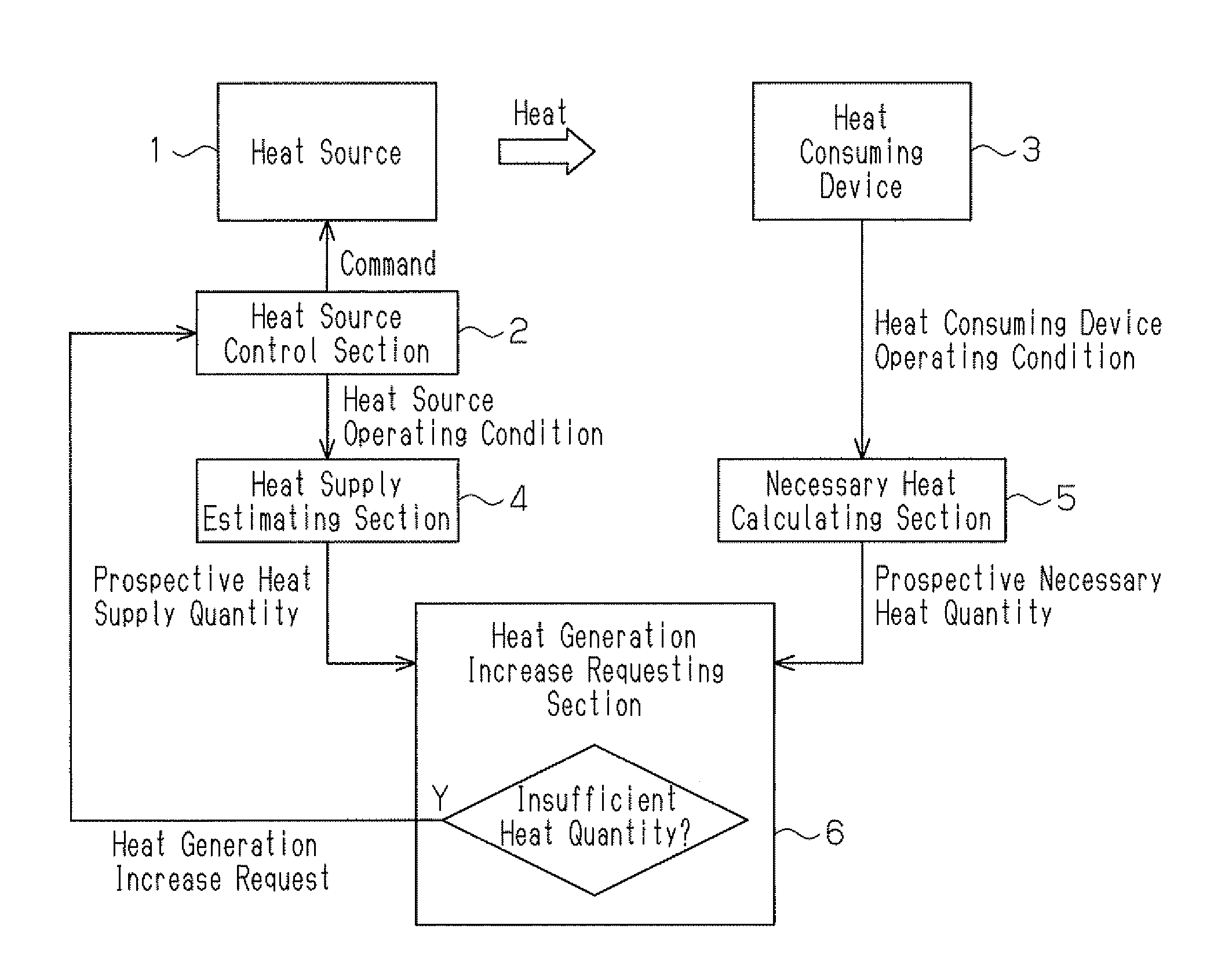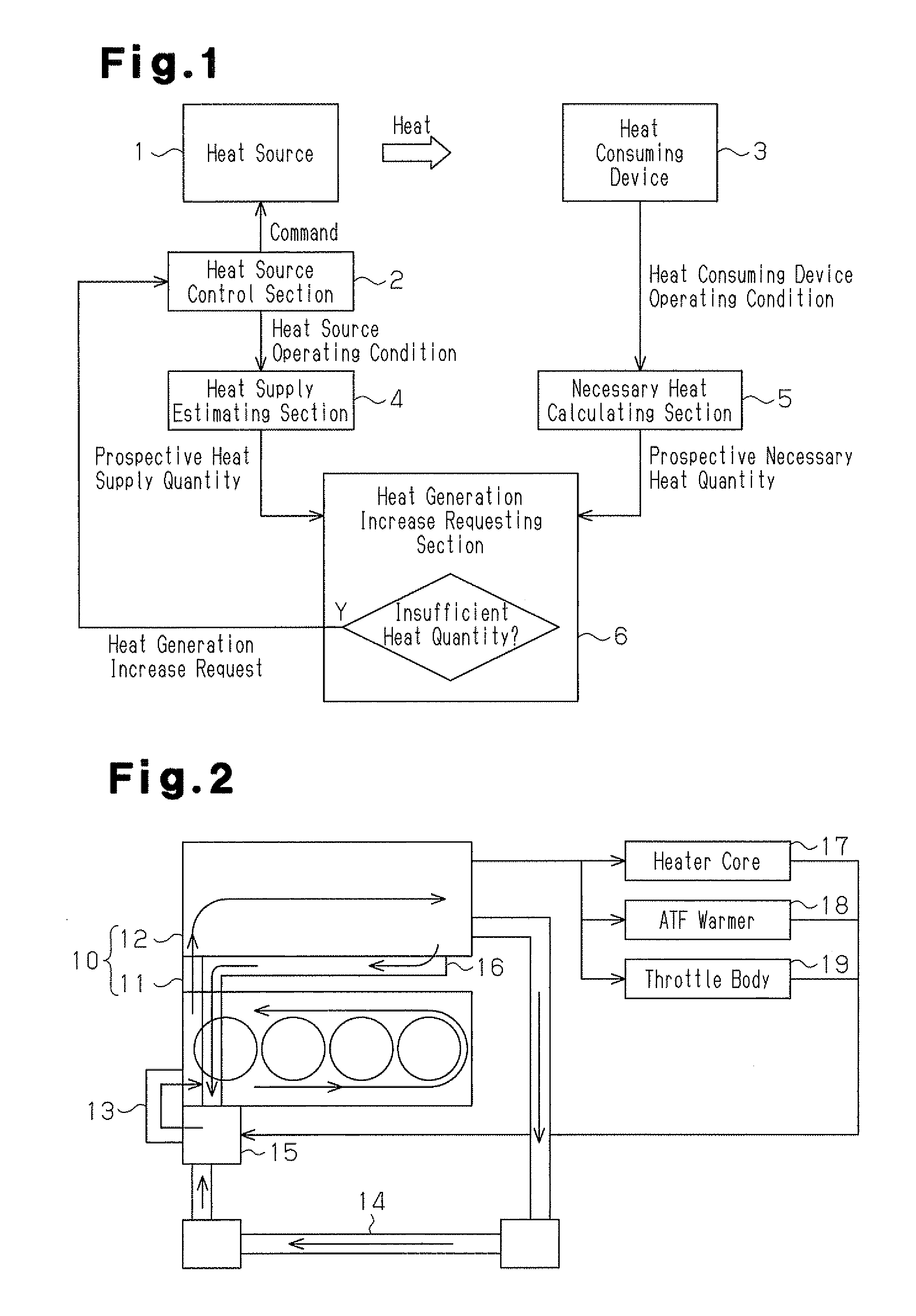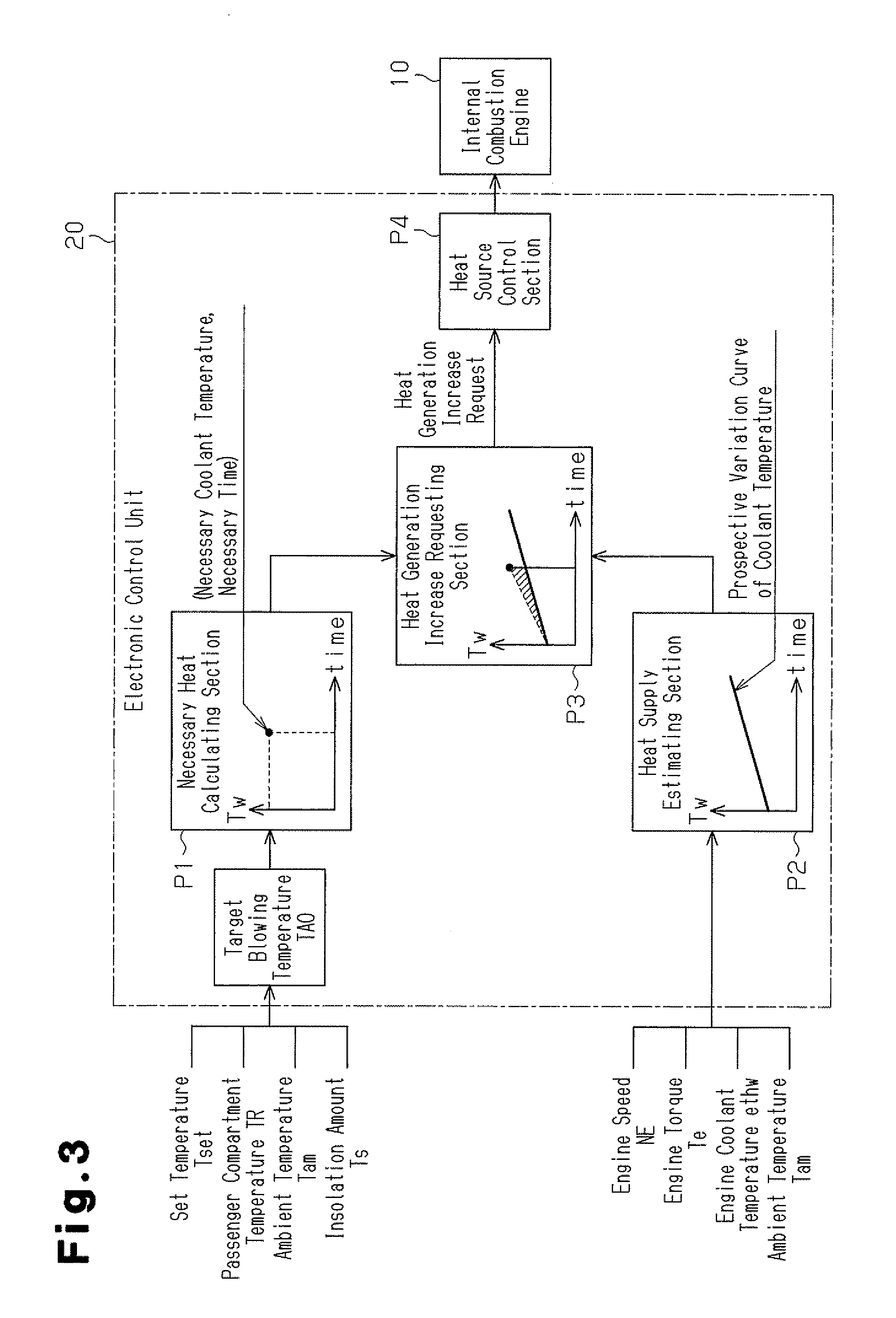Control device for vehicle
a control device and vehicle technology, applied in the direction of electric control, machines/engines, output power, etc., can solve the problems of difficult to ensure the production of sufficient heat, the quantity of heat supplied to the heater device will likely fall short, and the engine heat has decreased, so as to achieve comparatively easy control and complicated control
- Summary
- Abstract
- Description
- Claims
- Application Information
AI Technical Summary
Benefits of technology
Problems solved by technology
Method used
Image
Examples
first embodiment
[0038]A first embodiment of the control device for a vehicle according to the present invention will hereafter be described with reference to FIGS. 2 to 5. Specifically, the present embodiment will be described as to, by way of example, a case in which the internal combustion engine mounted in the vehicle is the heat source and the heater core in the heater device for heating the passenger compartment is the heat consuming device.
[0039]FIG. 2 represents the configuration of a cooling system in a vehicle employing the present embodiment. A water jacket is formed in a cylinder head 11 and a cylinder block 12 of an internal combustion engine 10 serving as a heat source. Coolant water circulates in the water jacket by means of a water pump 13.
[0040]After having passed through the cylinder head 11 and the cylinder block 12, the coolant water is cooled by a radiator 14 and returned to the engine 10 when the engine coolant temperature is sufficiently high. In contrast, if the engine coolan...
second embodiment
[0069]A second embodiment of the control device for a vehicle according to the invention will now be described in detail with reference to FIG. 6. Same or like reference numerals are given to components of the present embodiment and the other embodiments that will be described later that are the same as or like corresponding components of the above described embodiment. Detailed description of such components will be omitted.
[0070]When the heat generation increase control is performed in response to the heat generation increase request from the heat generation increase requesting section P3, the operating state of the engine 10 may change, thus influencing the travel of the vehicle. Also, when the vehicle runs, operation control is performed on the engine 10 in response to a request other than the heat generation increase request. The operation control may be, for example, torque demand control for adjusting output torque of the engine 10 in such a manner as to satisfy the torque re...
third embodiment
[0077]In the above described embodiments, the heat generation increase request control and the heat generation increase control according to the present invention are performed for the heat supply from the engine 10 to the heater core 17, which serves as the heat consuming device. However, the invention may be used also for heat supply from the engine 10 to a heat consuming device other than a heater core 17. The heat consuming device other than a heater core 17 may be, for example, an oil warmer for a transmission, a battery, a motor, a differential, a fuel cell stack, and a heat storage device.
[0078]In the present embodiment, the invention is employed for a heat storage device. The heat storage device in the present embodiment is configured as a heat insulation container for retaining engine coolant water. Specifically, the heat storage device stores heated engine coolant water from a previous running cycle of the vehicle and releases the stored heated coolant water into a coolant...
PUM
 Login to View More
Login to View More Abstract
Description
Claims
Application Information
 Login to View More
Login to View More - R&D
- Intellectual Property
- Life Sciences
- Materials
- Tech Scout
- Unparalleled Data Quality
- Higher Quality Content
- 60% Fewer Hallucinations
Browse by: Latest US Patents, China's latest patents, Technical Efficacy Thesaurus, Application Domain, Technology Topic, Popular Technical Reports.
© 2025 PatSnap. All rights reserved.Legal|Privacy policy|Modern Slavery Act Transparency Statement|Sitemap|About US| Contact US: help@patsnap.com



